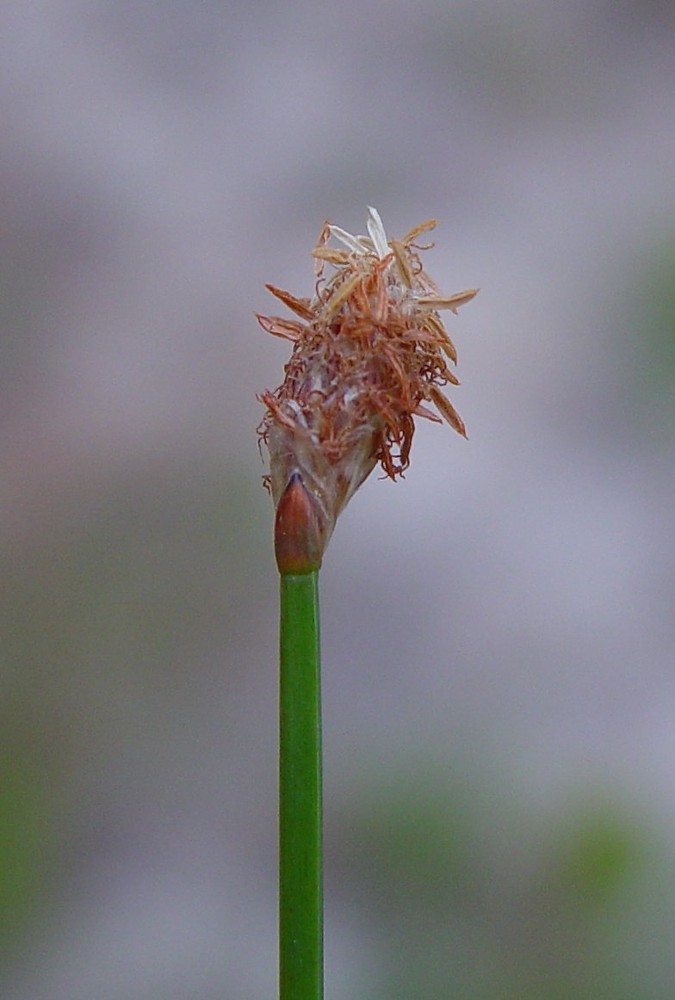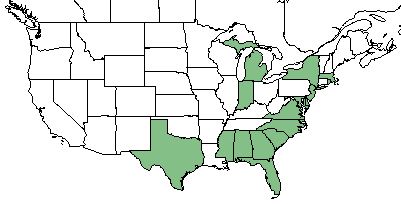Difference between revisions of "Eleocharis melanocarpa"
(→Description) |
(→Distribution) |
||
| Line 26: | Line 26: | ||
==Distribution== | ==Distribution== | ||
| + | ''E. melanocarpa'' ranges from Massachusetts to Florida and Mississippi, | ||
| + | disjunct to eastern Texas, southern Michigan, and northern Indiana. <ref name="USDA"/><ref name="Sorrie & Leonard 1999"/><ref name="Weakley 2015"/> | ||
| + | |||
==Ecology== | ==Ecology== | ||
===Habitat=== <!--Natural communities, human disturbed habitats, topography, hydrology, soils, light, fire regime requirements for removal of competition, etc.--> | ===Habitat=== <!--Natural communities, human disturbed habitats, topography, hydrology, soils, light, fire regime requirements for removal of competition, etc.--> | ||
Revision as of 16:58, 4 December 2017
| Eleocharis melanocarpa | |
|---|---|

| |
| Photo by © Arthur Haines, New England Wild Flower Society | |
| Scientific classification | |
| Kingdom: | Plantae |
| Division: | Magnoliophyta - Flowering plants |
| Class: | Liliopsida - Moncots |
| Order: | Poales |
| Family: | Cyperaceae |
| Genus: | Eleocharis |
| Species: | E. melanocarpa |
| Binomial name | |
| Eleocharis melanocarpa Torr. | |

| |
| Natural range of Eleocharis melanocarpa from USDA NRCS Plants Database. | |
Common names: Black-fruited spikerush, blackfruit spikerush[1][2]
Contents
Taxonomic Notes
Description
The tips of the culms of E. melanocarpa often arch over and root in the substrate forming a dense tangle. [3]
Distribution
E. melanocarpa ranges from Massachusetts to Florida and Mississippi, disjunct to eastern Texas, southern Michigan, and northern Indiana. [2][3][1]
Ecology
Habitat
Conservation and Management
Cultivation and restoration
Photo Gallery
References and notes
- ↑ 1.0 1.1 Weakley A. S.(2015). Flora of the Southern and Mid-Atlantic States. Chapel Hill, NC: University of North Carolina Herbarium.
- ↑ 2.0 2.1 USDA, NRCS. (2016). The PLANTS Database (http://plants.usda.gov, 30 November 2017). National Plant Data Team, Greensboro, NC 27401-4901 USA.
- ↑ 3.0 3.1 Sorrie B. A. and Leonard S. W. (1999). Noteworthy records of Mississippi vascular plants. Sida 18:889-908.